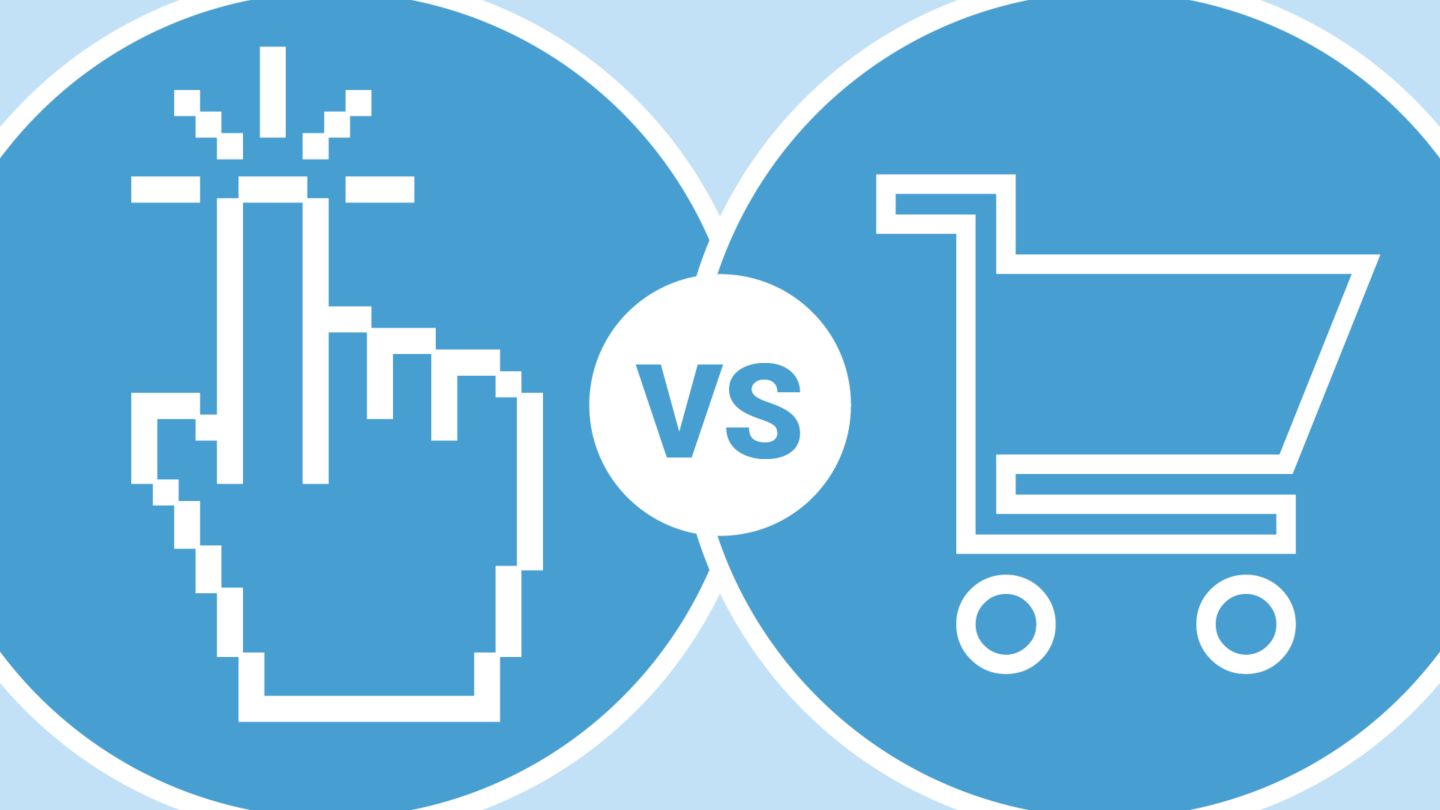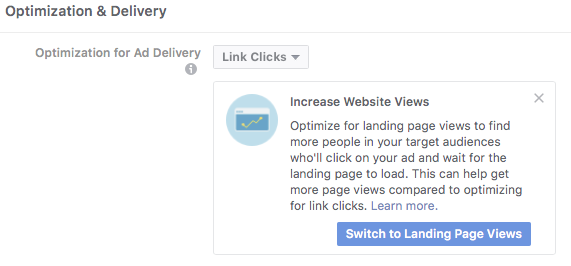Clicks vs. Conversions On Facebook: What's The Difference?

When you’re creating a Facebook campaign, you have several different options for optimizing. Two of those are website traffic and conversions.
Optimizing for clicks (or traffic) means you’re aiming to get the lowest cost for someone to click on your ad.
Optimizing for conversions means you’re aiming to get the lowest cost for an actual action taken, or conversion.
For brand awareness campaigns with the objective of simply driving traffic, optimizing for clicks might be your best bet.
However, for most general business campaigns, you have a goal and you want people to take action (like complete a purchase or sign up for your email list). In those cases, you want to optimize for conversions, even if it means increased CPC (cost per click).
Here’s why:
If you’re only targeting users based on their clicking behavior, this means those users are clicking on the CTA (call to action), but not necessarily landing on the page they’re clicking out to.
In fact, it’s completely possible that the user bounces before the page even loads, or they land on the page and a second later exit out because they’re not interested.
In addition, recent Nielsen data has shown that there is absolutely no significant correlation between the ratio of those that click through to a given site and any brand recall, awareness, or purchase intent metrics.
This means you have potentially wasted a ton of money by driving unqualified traffic to your site just for the sake of an efficient CPC. It has also been shown that clicks are not correlated to conversion lift either.
And, well, that’s just not good ad strategy. So why do people still insist on optimizing for clicks?
What many people fail to keep in mind is that paid search platforms like Google are very different from social advertising platforms like Facebook.
When advertising on Google, intent is typically disclosed by the user via their search. In other words, the audience is searching for your service, product, or brand because they are highly interested.
This, however, is not the case when it comes to social advertising. The audience is not actively seeking your business as they scroll through their feeds, which means you can’t assume you’re advertising to an engaged, qualified audience.
Considering this, optimizing for clicks isn’t always the best strategy because we are essentially saying, “show our ads to those who have a high propensity to click on ads.” So, our ad will be shown to users who tend to click on ads, but (and, here’s the kicker) not necessarily convert. Tricky, tricky.
Now you’re probably thinking, “How do I fix this mess?” Well, you are in luck, my friend. Facebook has a solution!
Since Facebook ties data to each user, they allow us to serve to those who are most likely to perform the desired action we are optimizing against via conversion optimization. The platform’s algorithm is monitoring signals from its users across all devices in order to build a prediction model that allows us to then deliver to those specific highly qualified audiences.
Once your campaign is set up with the objective of a given conversion, the platform will serve ads until a conversion takes place. Once the conversion happens, the platform then analyzes the various attributes of the user and serves the ads to people with the same attributes.
Essentially, Facebook is building out its own lookalike audience within your pre-determined audience.
Cool, right?
According to Facebook tests, conversion optimization results in a 30% lower CPA (cost per action/conversion) compared to CPC optimization. Tests also showed 0.5x – 3x conversions attributed to conversion optimization. So just because it might seem like you’re spending less money, you’re not actually.
And although conversion optimization may seem like a saving grace, it’s important to keep in mind that the Facebook advertising platform requires 15 – 25 daily conversions on a pixel level and at the ad set level. This means you’ll get the best results when you have enough data for the system to optimize on its own.
We can settle on the happy medium of Landing Page Views. This optimization targets those who not only click on your link, but also land on and view your page. Although not as ideal as optimizing for the final conversion (purchase, download, lead, etc.), this is still a way to bring in a more qualified audience to your site.
In order to optimize for Landing Page Views, you need the following:
When you navigate to the ad set within your campaign, you’re able to select various types of optimizations for ad delivery:

Click on the drop-down menu and select “Landing Page Views.” Once selected, you’re all set! Although your CPC may rise slightly, you’re most likely to see more qualified traffic enter your marketing funnel, therefore your CPA at the bottom of the funnel should be less expensive and generate a higher amount of revenue.
Interested in learning more about Paid Social and how it can help your bottom line? Read our latest case study: Food Delivery Company Sees 222% Revenue Increase on Facebook and Instagram.

